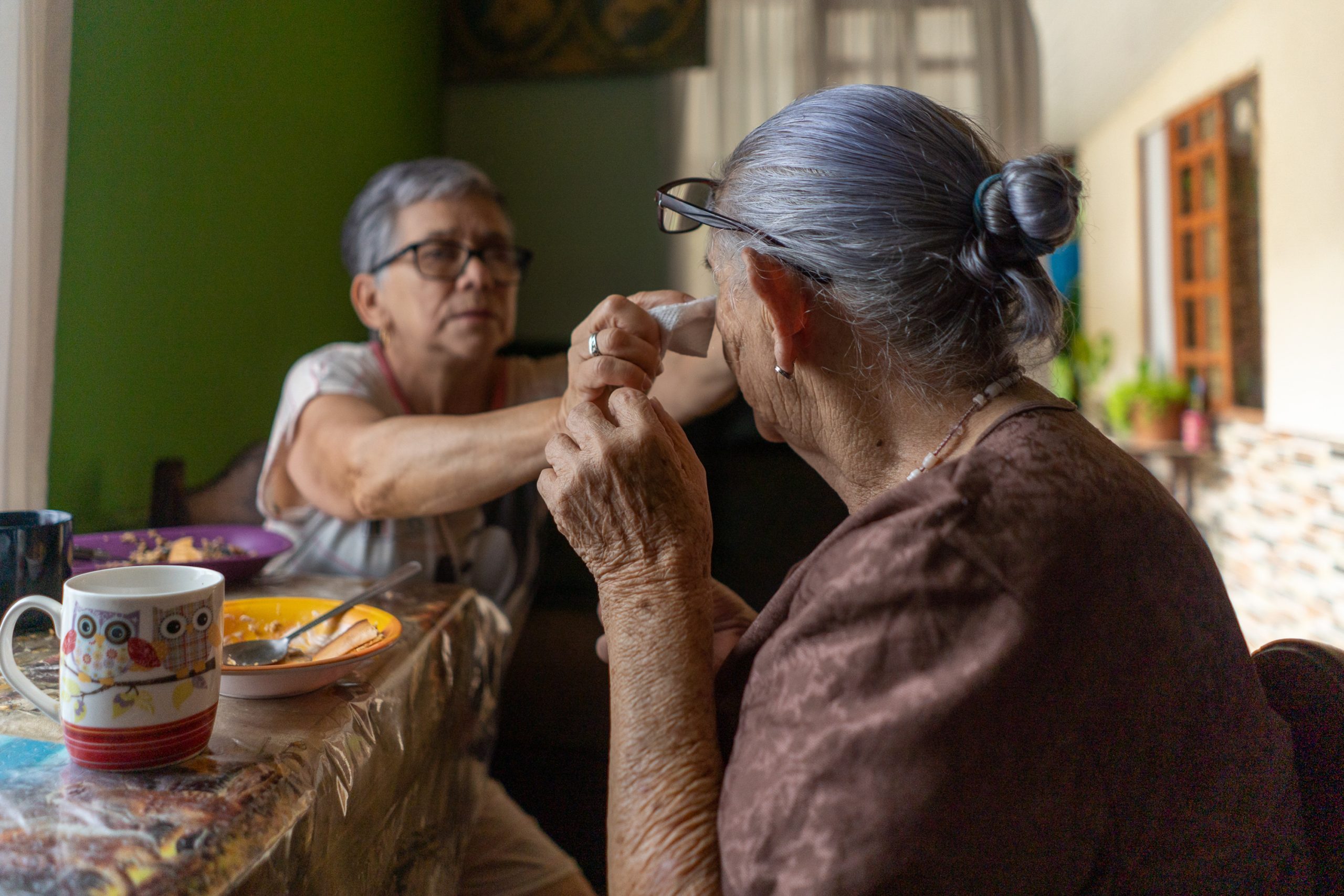We all know it. Without caregivers, nothing else in a country works. Our societies don’t improve; our economies don’t prosper; inequalities and injustices increase. However, the Economic Commission for Latin America and the Caribbean (ECLAC) indicated in its November 2021 report entitled “Towards the Construction of Comprehensive Care Systems in Latin America and the Caribbean: Elements for its implementation” that not only Costa Rich but the region is on the threshold of a caregiving crisis.
“Life expectancy is lengthening,” the report states. “There are more and more people who need care, and fewer people ‘available’ to do it.”
But what is caregiving, exactly? Is Costa Rica really on the brink of a caregiving crisis? What ethical and economic challenges could this crisis bring? And who is providing care today in Costa Rica?

Who’s taking care of Latin America—and Costa Rica?
Before COVID-19, according to data from ECLAC’s Gender Equality Observatory for Latin America and the Caribbean, “women in the region spent more than three times as much time on
unpaid work as men.”
In addition, “about 60% of women in households with the presence of children under 15 years of age declare that they do not participate in the labor market due to family responsibilities. In households without the presence of children in that age group, this figure is close to 18%.”
When families can hire outside caregivers, ECLAC indicates that “in Latin America and the Caribbean, as of 2019, around 13 million people were engaged in paid domestic work, 91.5% of them women, many of them Afro-descendants, indigenous and/or migrants… The pandemic highlighted the centrality that care has in the functioning of our economies and our societies, which at the same time also made evident how unsustainable and unjust its current organization is.”
The reality in Costa Rica is not very different from the rest of the region.
The Satellite Account for Unpaid Domestic Work in Costa Rica 2017, from the Central Bank of Costa Rica, establishes that each week in Costa Rica, people over 15 years of age dedicate 15.9% of their time to unpaid domestic work. Segregating this percentage, women in urban areas spend 36.8 hours a week on unpaid domestic work, and men in urban areas spend 15.3 hours. In rural areas, women spend 42.8 hours a week, and men 14.9 hours.
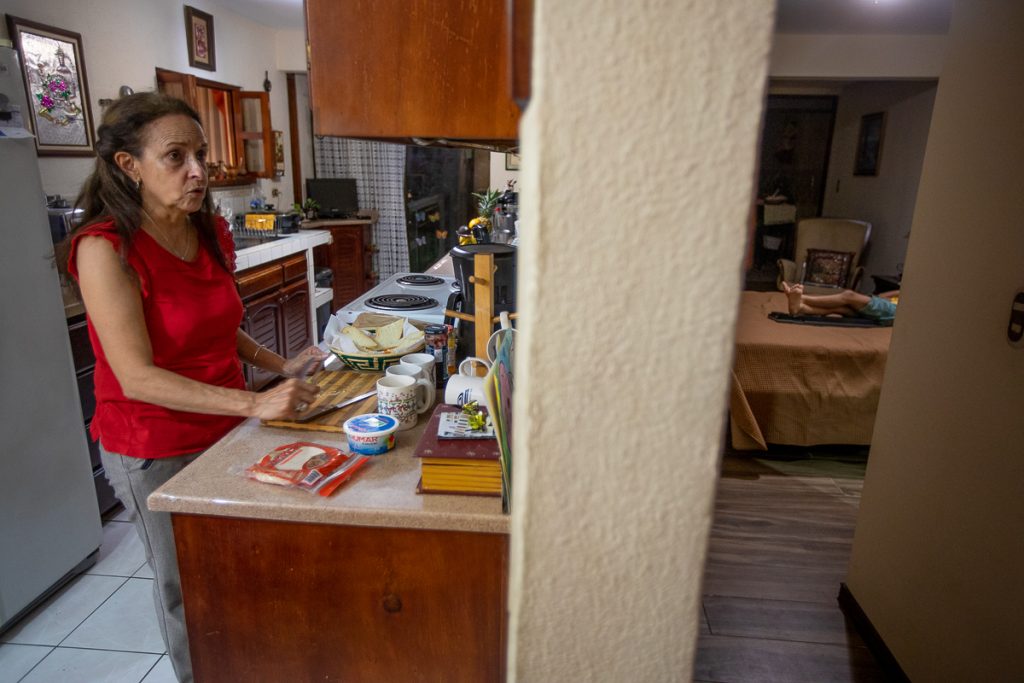
These unpaid domestic jobs correspond to the preparation of food; cleaning and maintenance; care, training and instruction of children; washing and repairing clothes; household purchases, payments or procedures; services to the community and other households; care of non-dependent people; organization of housework; and dependent care.
This BCCR analysis also determines the value of these jobs for the national economy. If it had to be translated into how much they represent within the gross domestic product (GDP) and according to the salaries established for these tasks, the hours invested correspond to ₡8.3 billion (over $13 million), or 25.3% of GDP. So, if women in urban areas received a salary for this work, they would earn ₡2.9 million colones per year—that is, a monthly salary of just over ₡240,000 per month (about $380).
The satellite account also shows that people between 36 and 54 invest the most time in these tasks, followed by people aged 55 and over.
What this statistical information from the BCCR does not show us is how much of this work is already being carried out by people over the age of 65—especially when it comes to the care of children or senior citizens—and how much will increase as our society ages.
Older adults and caregiving in Costa Rica
According to the Institute of Statistics and Census (INEC), Costa Rica’s senior citizen population has doubled in the past 20 years, reaching 9.6%. By the year 2035, that number will double once again.
The 2021-2031 National Care Policy devotes almost all of its introduction to presenting this fact and exploring how this change in our population will increase the need for care for the elderly. The policy clarifies that the pressure that aging generates on care is not due to the fact that the average life expectancy of Costa Ricans has reached 80.4 years, but rather because “the years of life free of supervening illnesses and disabilities stands 71.2.” Statistically, the last 10 years of life of older adults will include “a higher prevalence of chronic diseases and loss of functionality.”
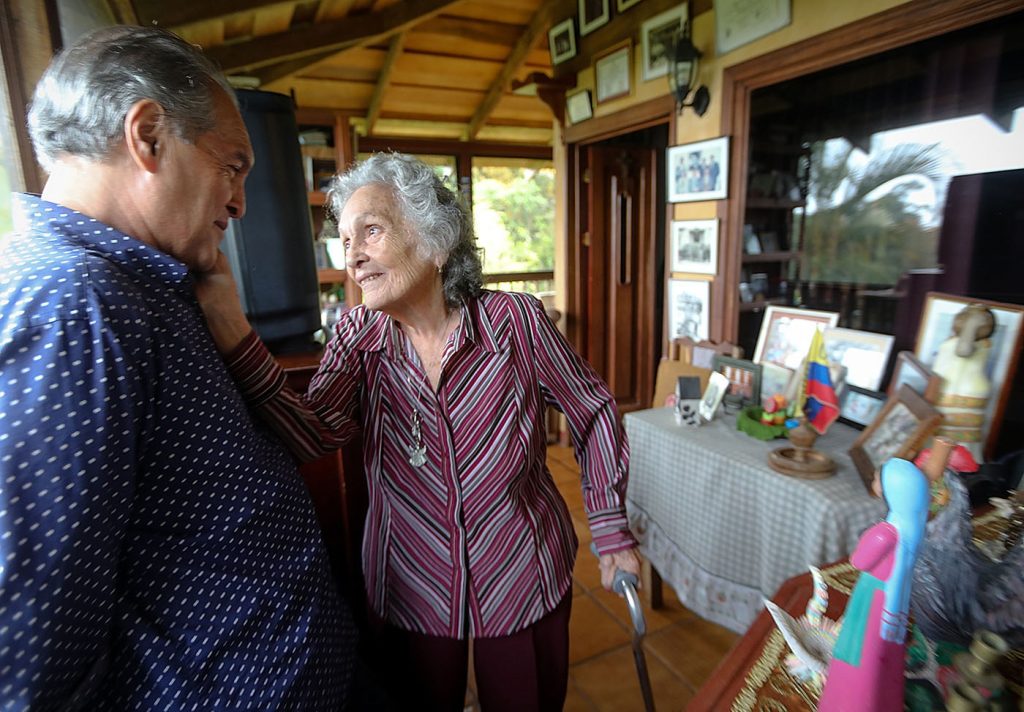
The National Care Policy states that “a large number of people receive non-formal care at home, facilitated especially by women. Given the demographic changes that the country is experiencing, family resources to care for dependency are overdrawn, and they will be insufficient. As a society, it is ethically and economically impossible to continue subsuming care and support work primarily in the family environment”.
The Head of Social Management of the National Council for the Elderly (CONAPAM), Alexandra Villalobos, points out that the role played by older adults is much more than demanding care. Older adults also contribute to caregiving.
“We know this reality, that there are older adults who are caregivers: of their own parents, of their spouse or sometimes even of siblings, and also of their grandchildren,” says Alexandra. “It has been a reality in the country for a long time. When it comes to caring for other older adults, in recent years it has been growing. The decrease in the youth population also means that care falls on the older adult population.”
The Base Study for the Characterization of Dependency and Care in Costa Rica from 2018, cited by the National Care Policy, points out that “caregivers are not much younger than dependent people. On average they are about 48 years old, but with a median of 51 years and a mode of 64 years. In other words, the age of most caregivers is 64 years.”
So, in a country whose population of senior citizens doubles every 20 years, it seems that we are depending on them—or people who are approaching senior citizen status—to solve the care problem for us.
Is that a problem in itself?
The problem, perhaps, is that we don’t know. There is very little data and information about how these caregivers are faring, invisible in the data and taken for granted in many communities. However, as Alexandra from CONAPAM says, and the visual reports of this edition in El Colectivo 506 demonstrate, there are many older adults who are carrying out this work.
What does it actually mean to be a caregiver? What is the responsibility assumed by these older adults?
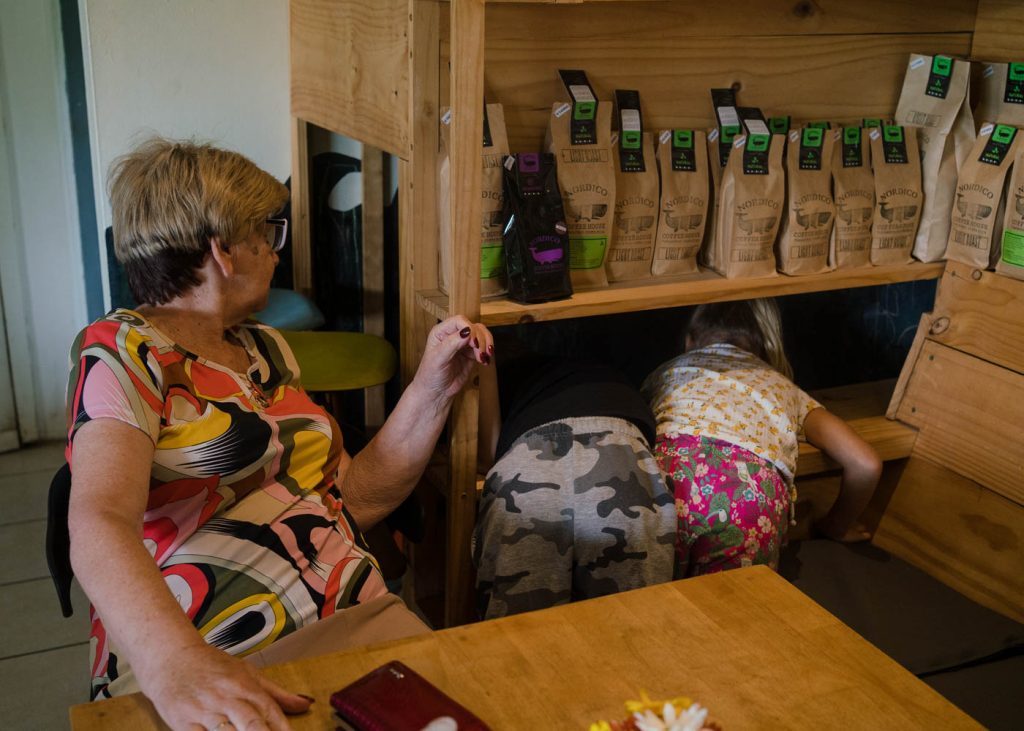
What does care work mean?
Care is considered as “a necessary job for the reproduction of life, without which the functioning of society and the economy is impossible.” That’s the stance laid out in “Care in Latin America and the Caribbean: Among Crises and Community Networks,” a report published in April 2022 by Oxfam International.
ECLAC says in its report that “caregiving is made up of activities that, daily and generationally, regenerate people’s physical and emotional well-being.”
So care guarantees the proper development of children, and a dignified life for older adults and people who are dependent due to a disability—but also the well-being of people who work in traditional productive environments. They need, at the very least, self-care. That is why care work guarantees the continuity of life.
But is caring just about meeting physical needs?
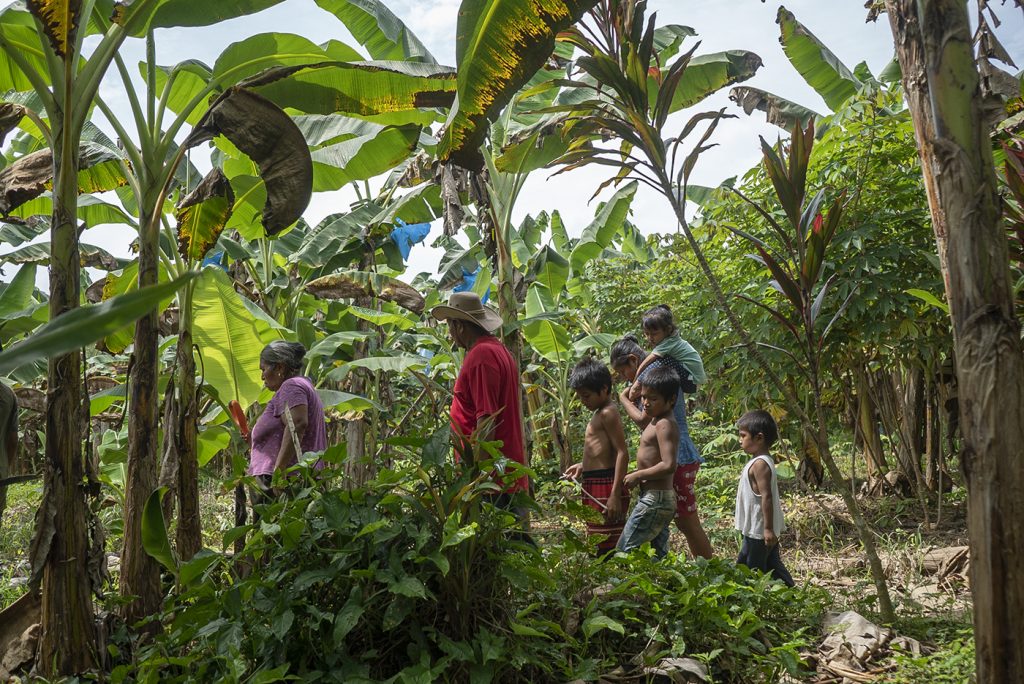
According to the 2021 ECLAC report, care includes “the maintenance of spaces and domestic goods, the care of bodies, education/training of people, the maintenance of social relationships or the psychological support of family members.” Therefore, caregivers could have many titles: cooks, cleaners, educators, emotional support staff, nursing assistants, time and family resource managers, even beauticians and massage therapists.
Care work has many dimensions. It has a direct impact on physical and mental health. Caregivers promote cognitive and physical development and independence for those receiving care. And for all this, they generate safe spaces.
That is the contribution of all older adults who—despite being retired, or continuing to participate in the labor market—continue to assume care work for generations behind and in front of them.
“It continues to be very important, because many times if [seniors] do not support or are willing to collaborate, there will be families who cannot go out to work,” says Alexandra from CONAPAM. “Or there are other older adults would end up in a condition of abandonment.”
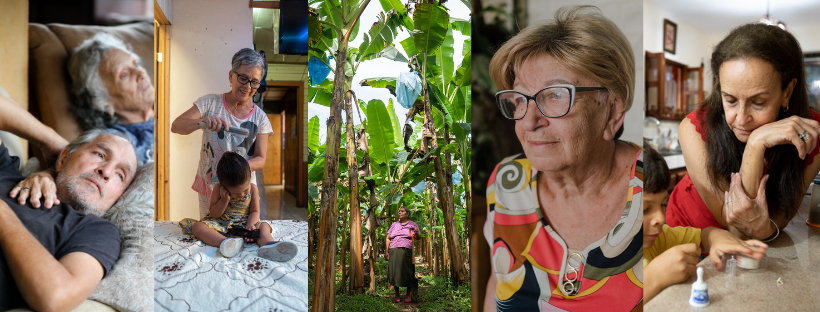
Our October 2022 edition, “Las Titas,” explores the realities of caregiving for older adults in Costa Rica: how they do their jobs, what challenges they face, and who is working to support them. With the support of the Yamuni Tabush Foundation, we have also hired five photojournalists, all Costa Rican women and mothers, who have spread out across the country to capture a day in the life of older women who are caregivers. Explore the edition here.


